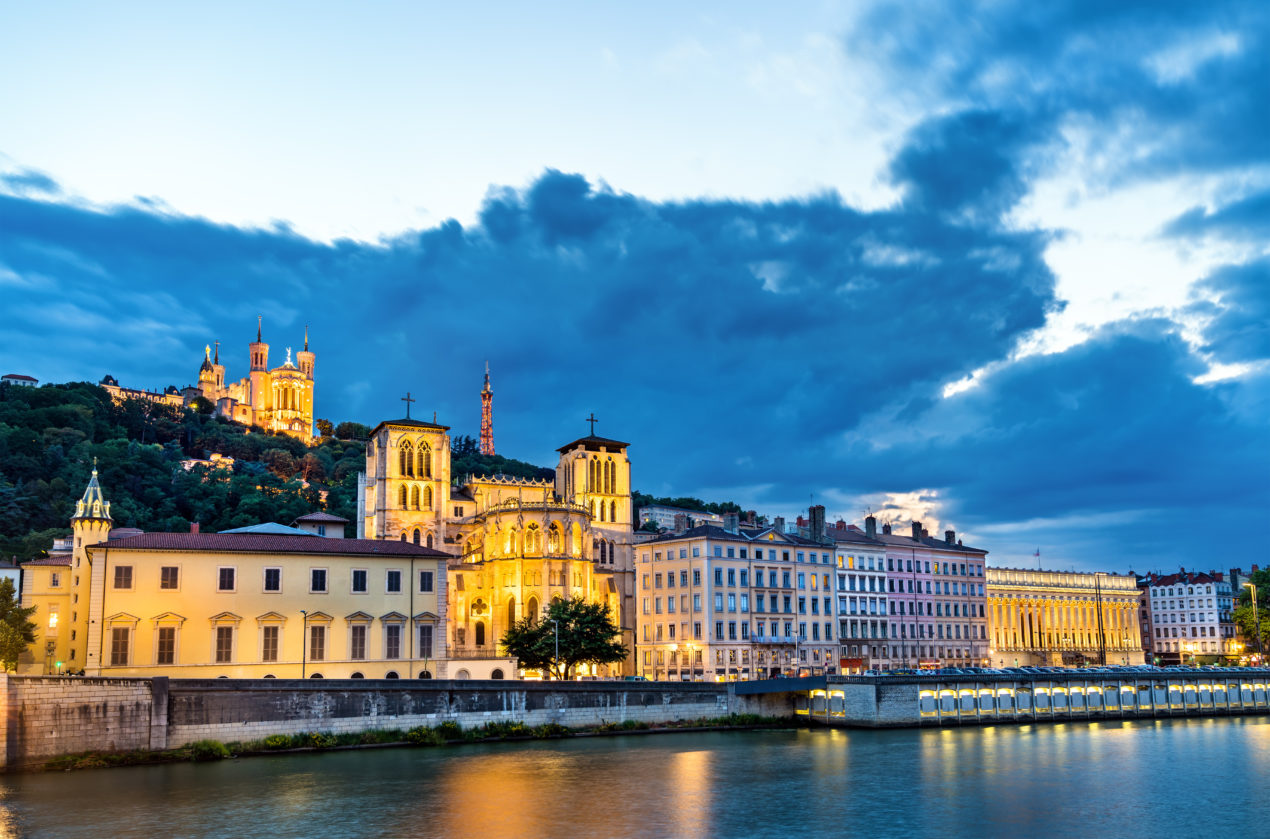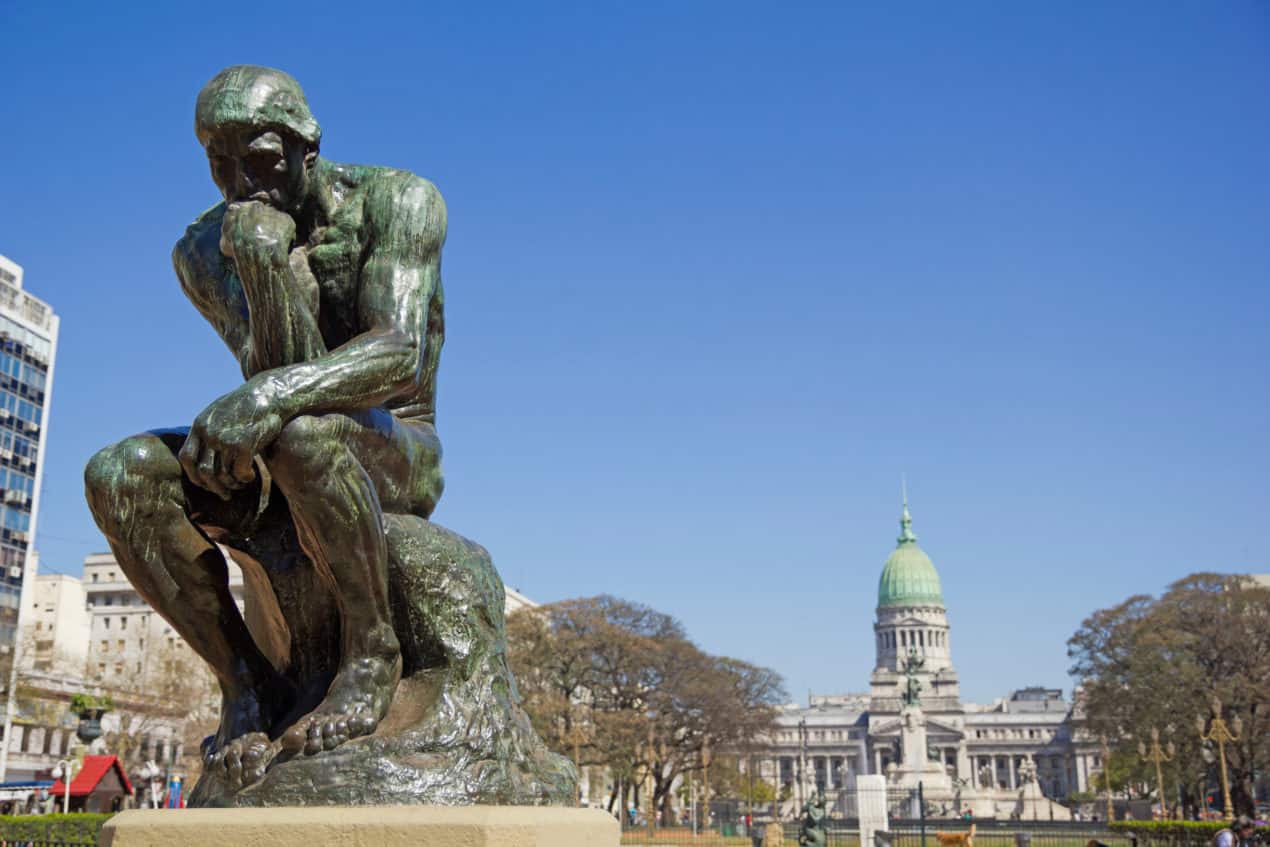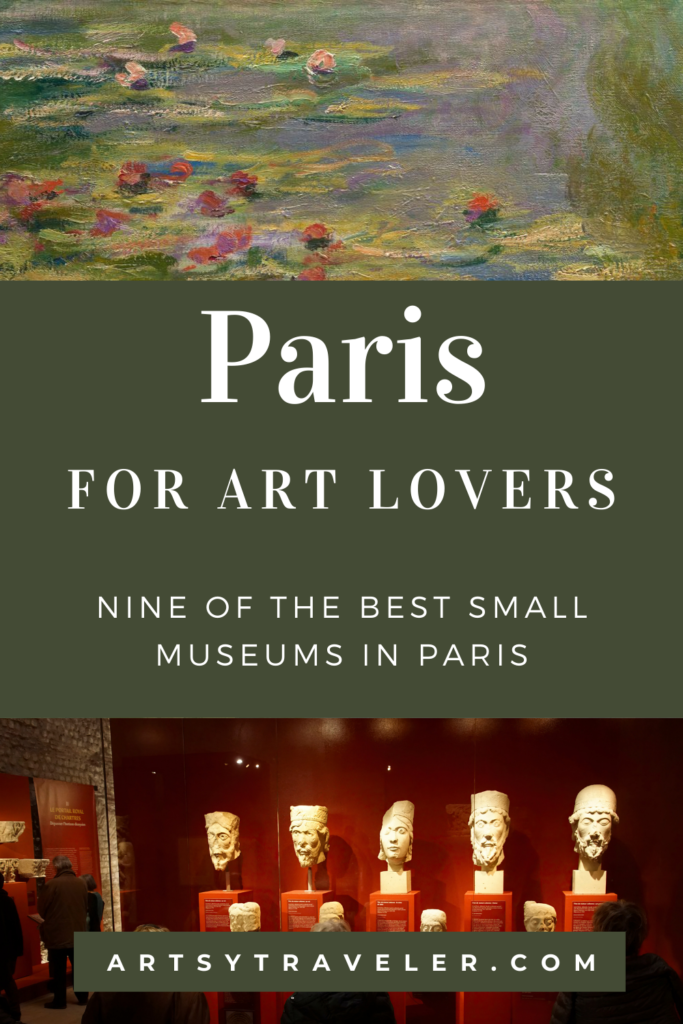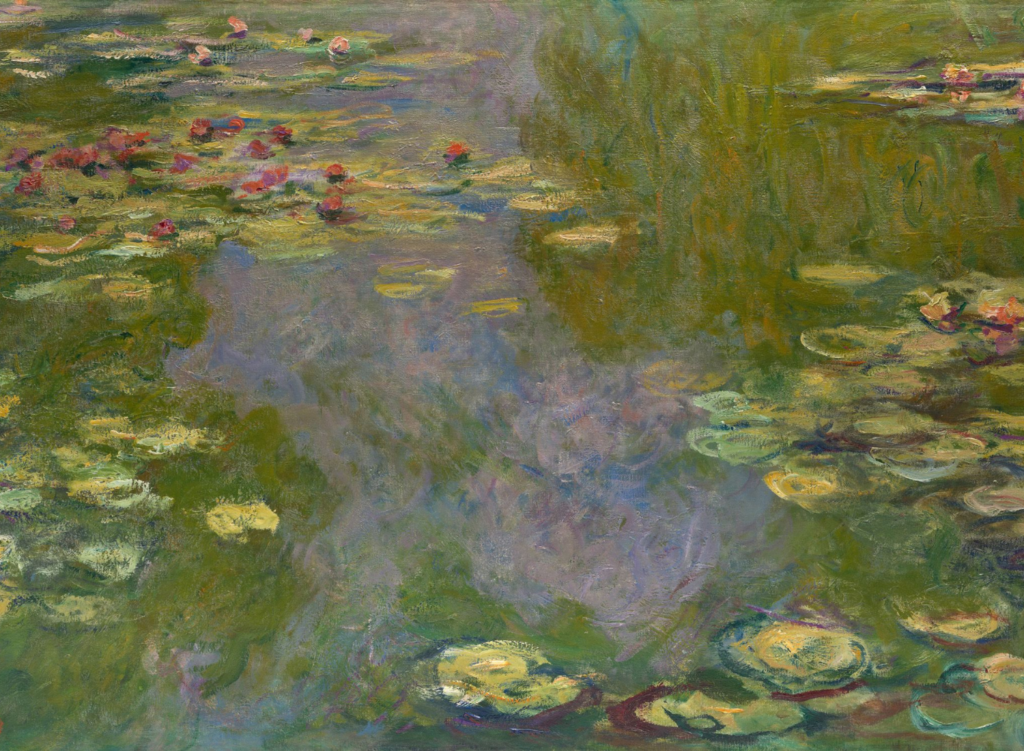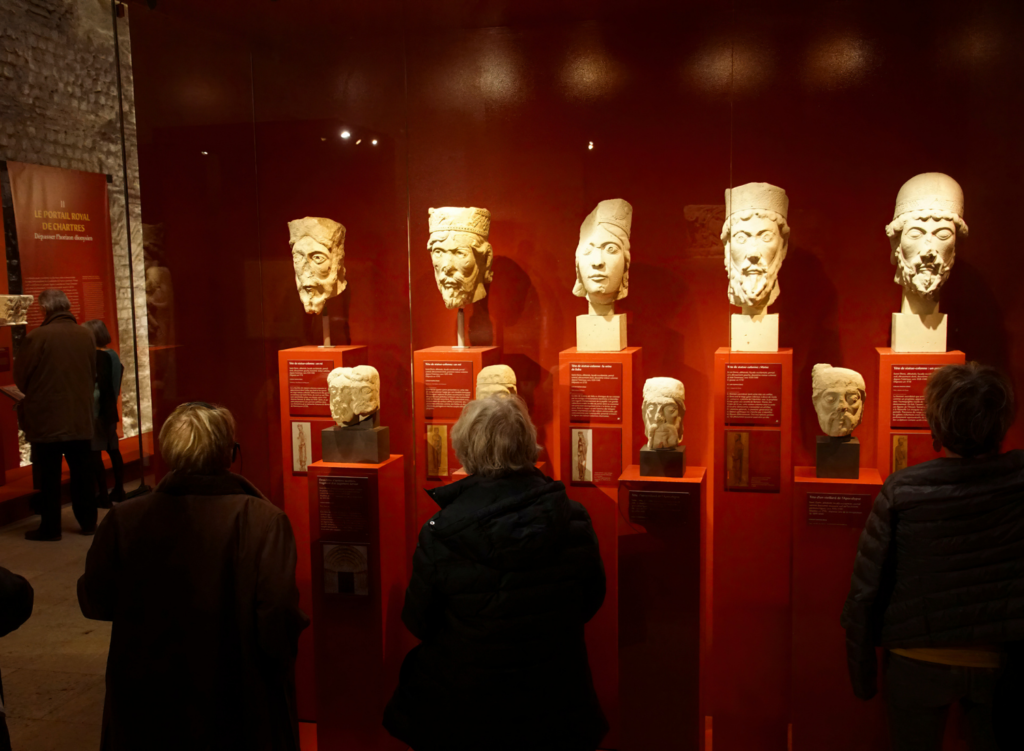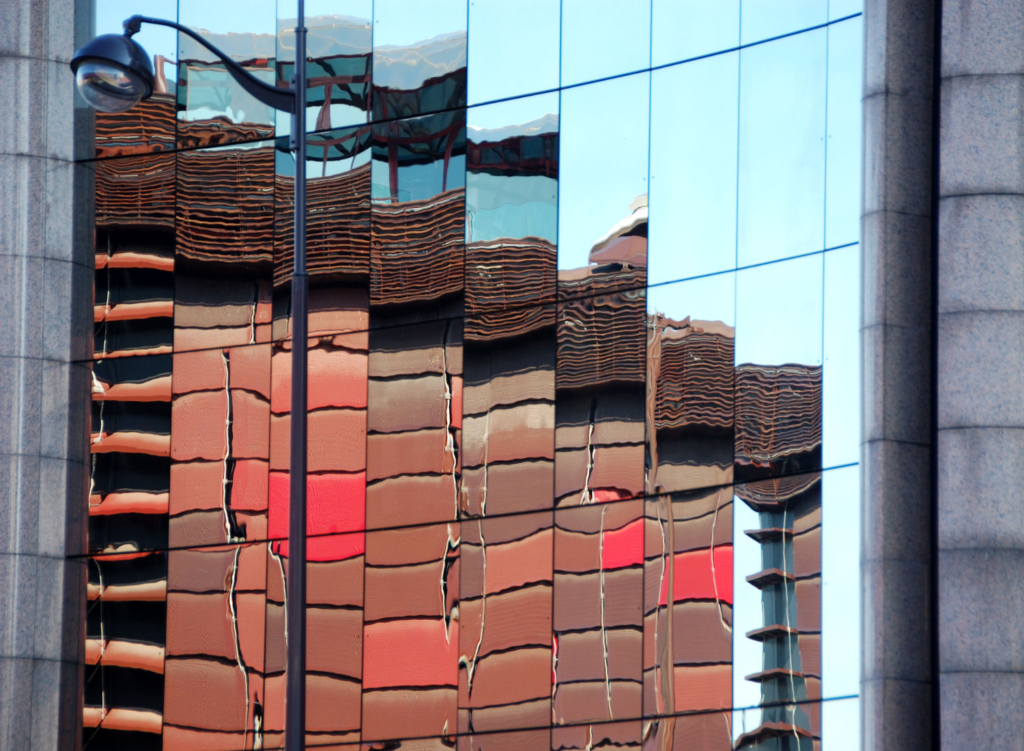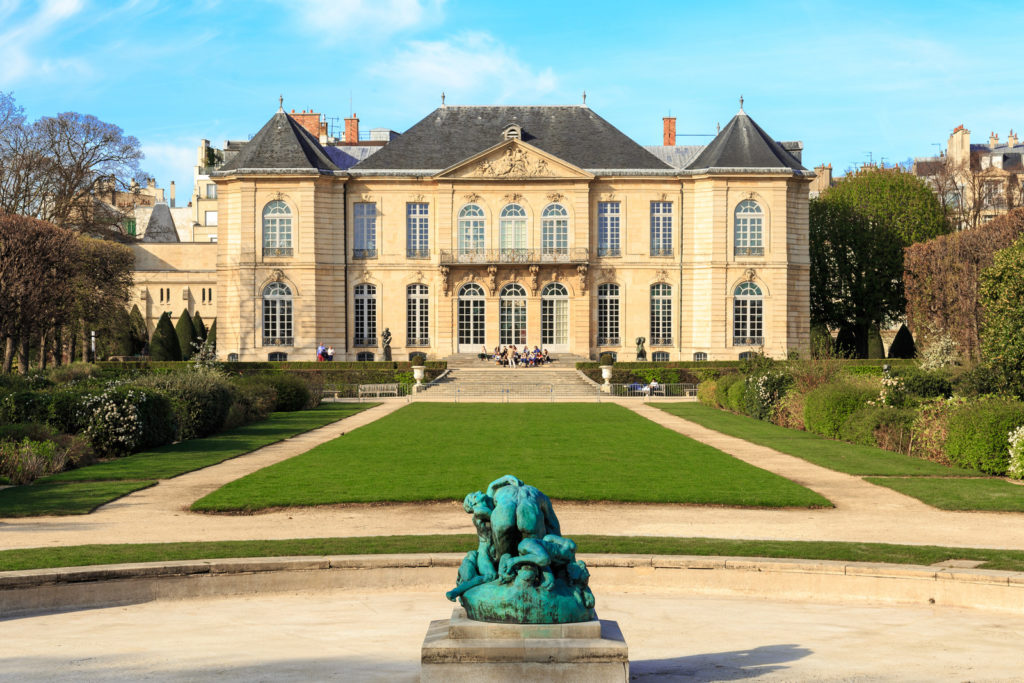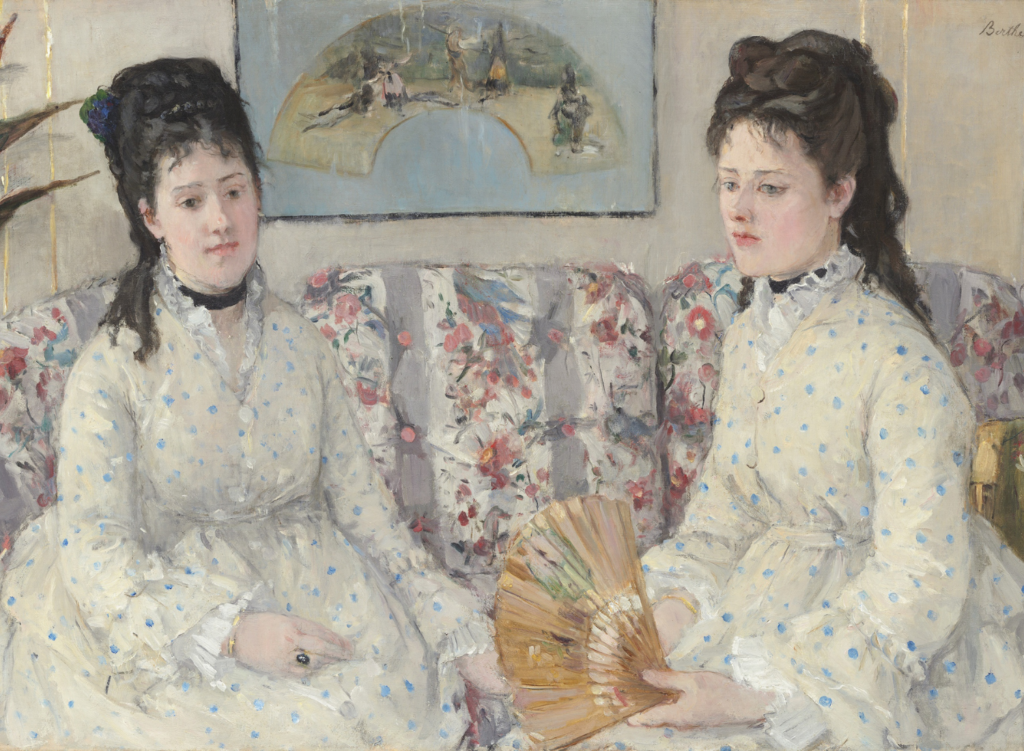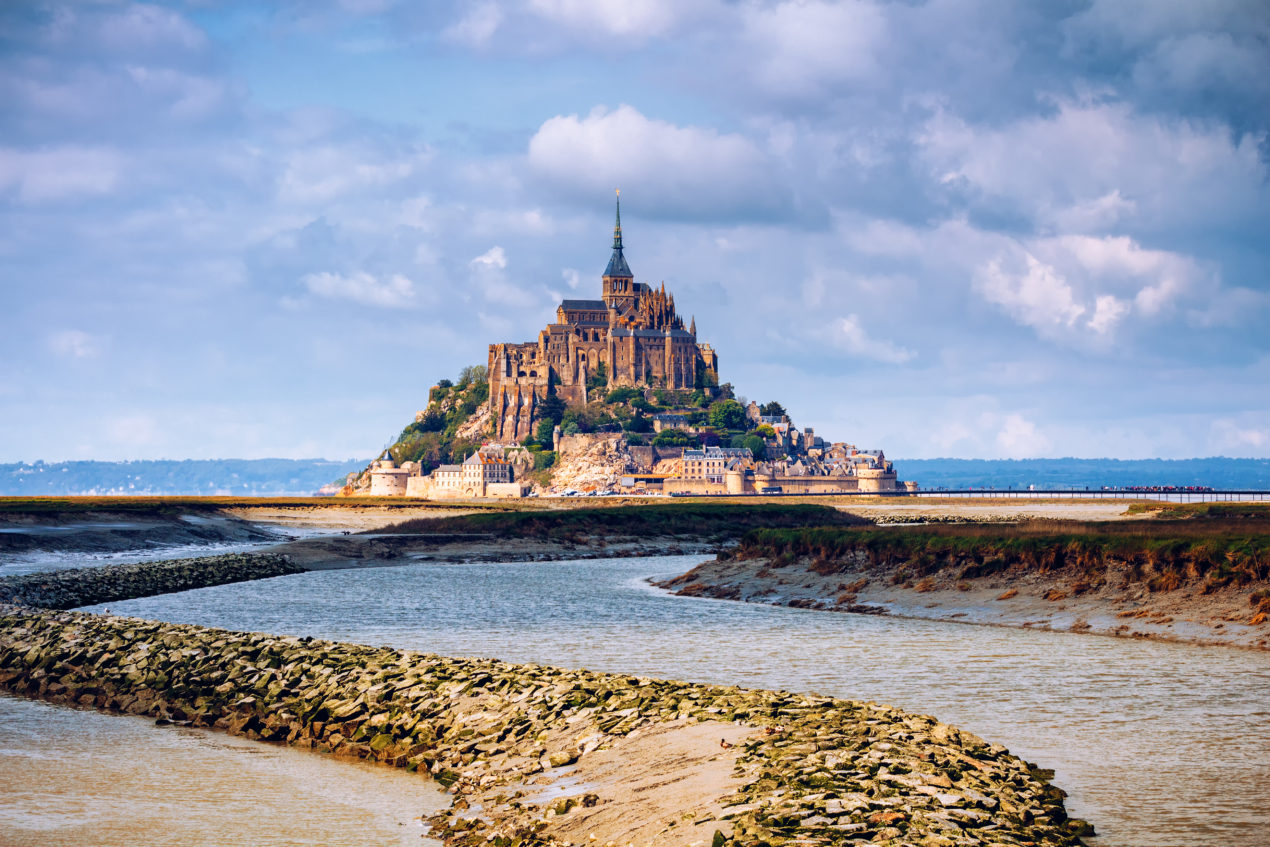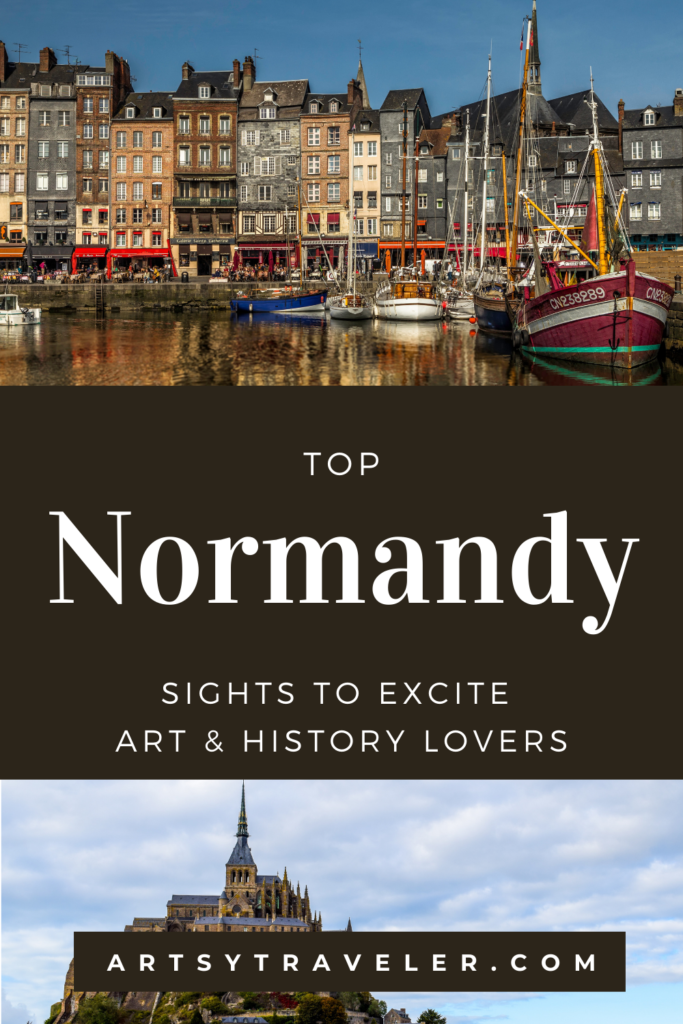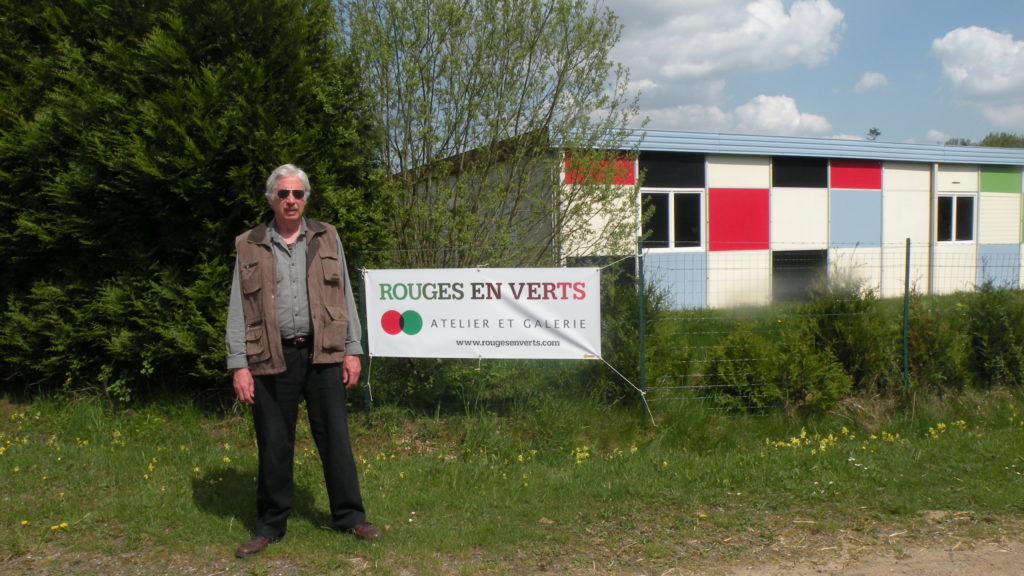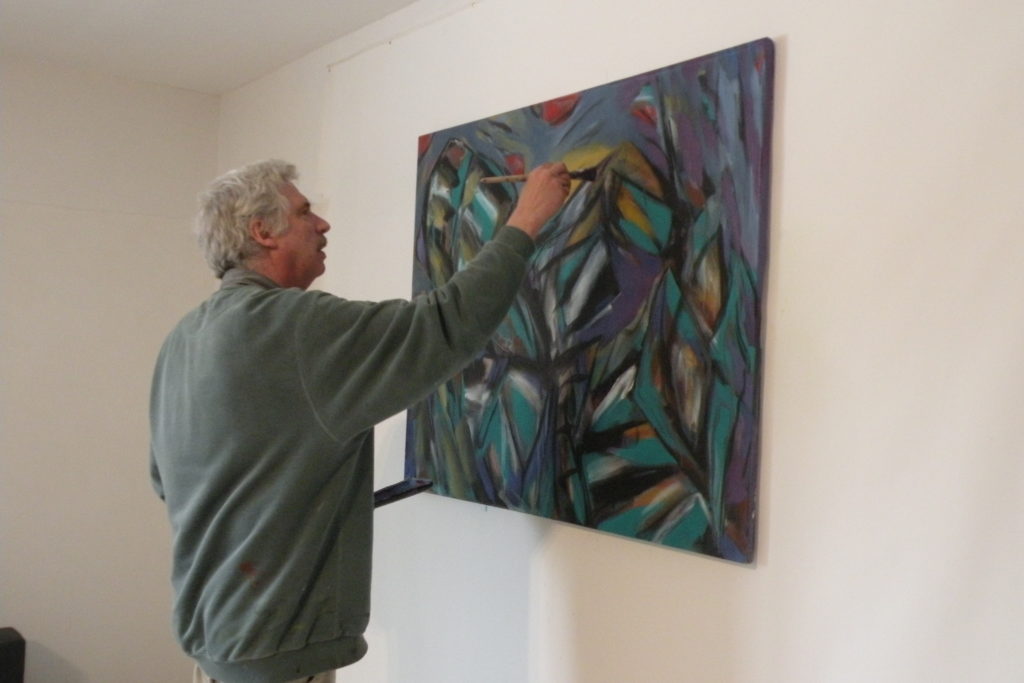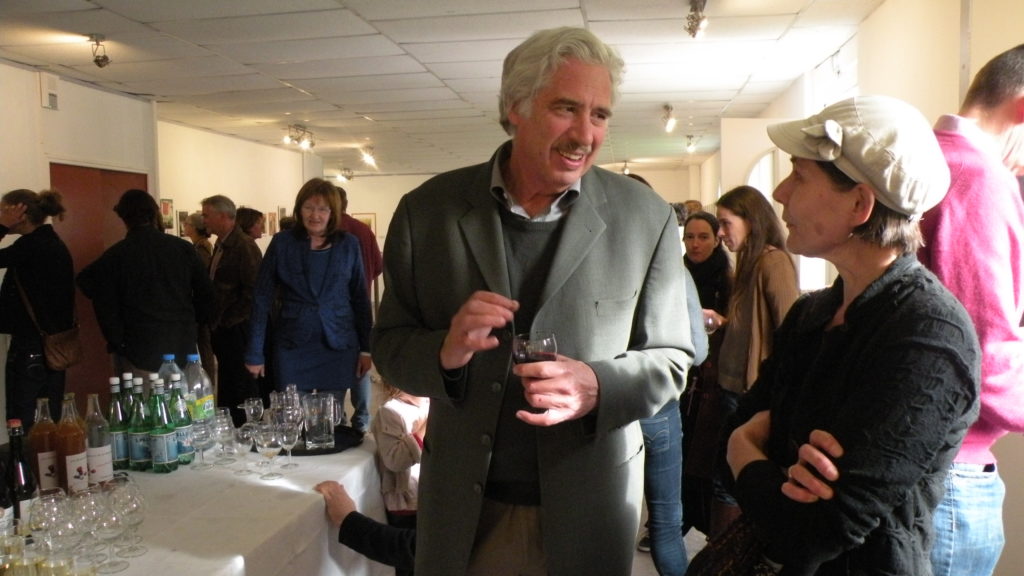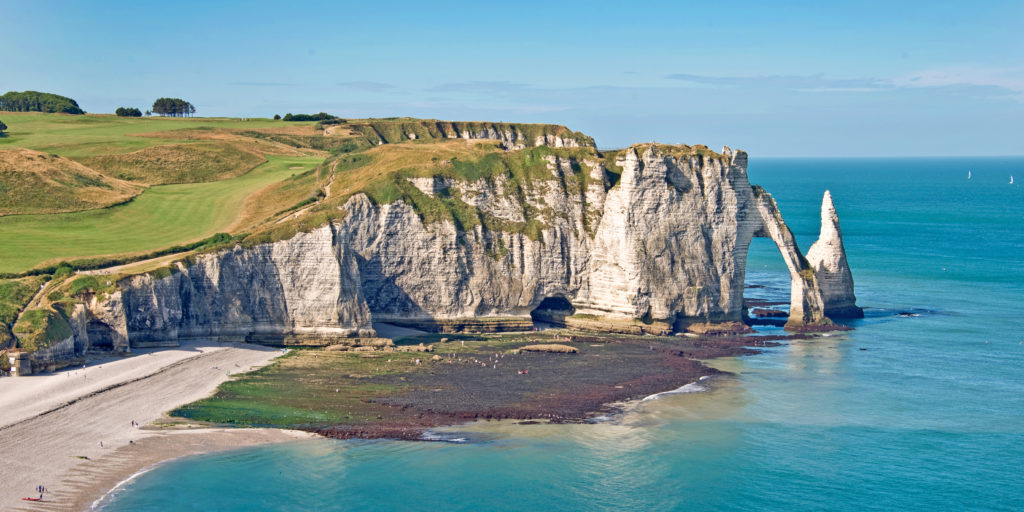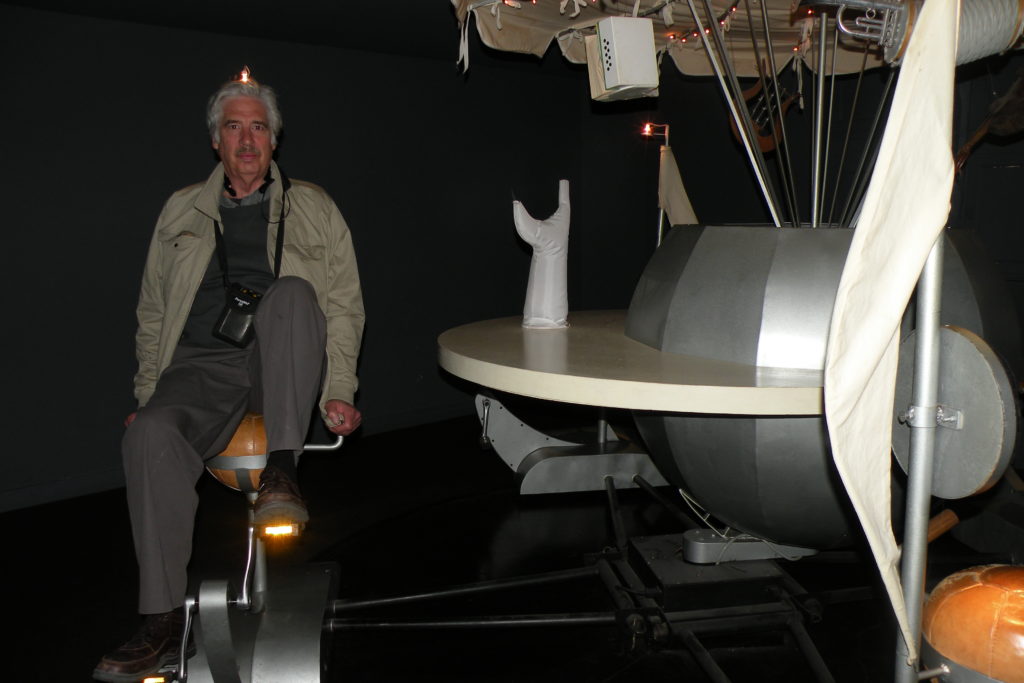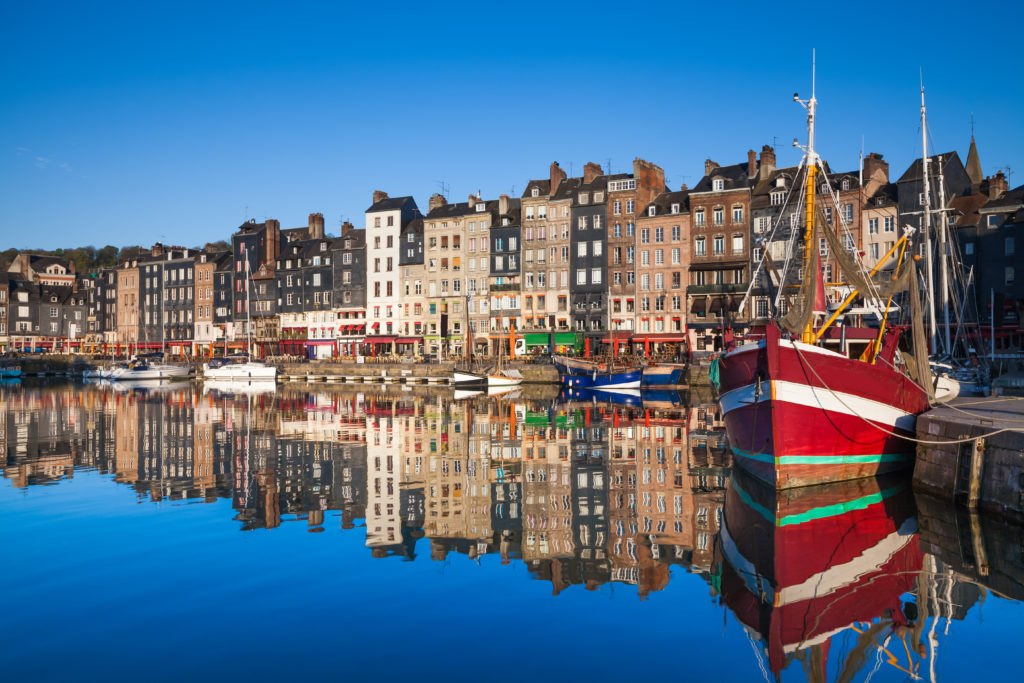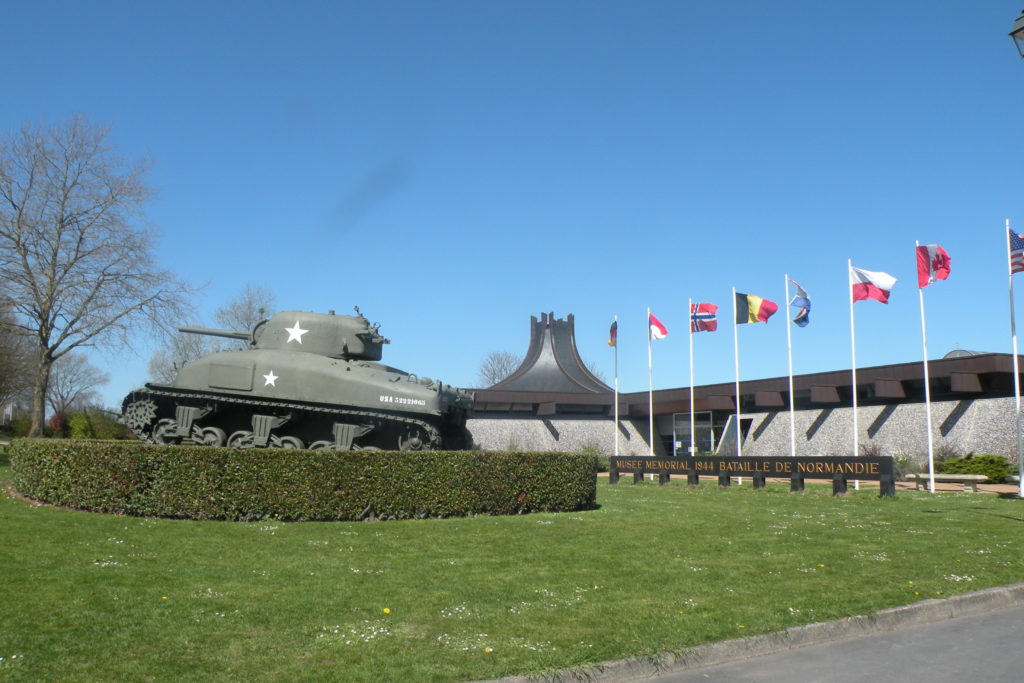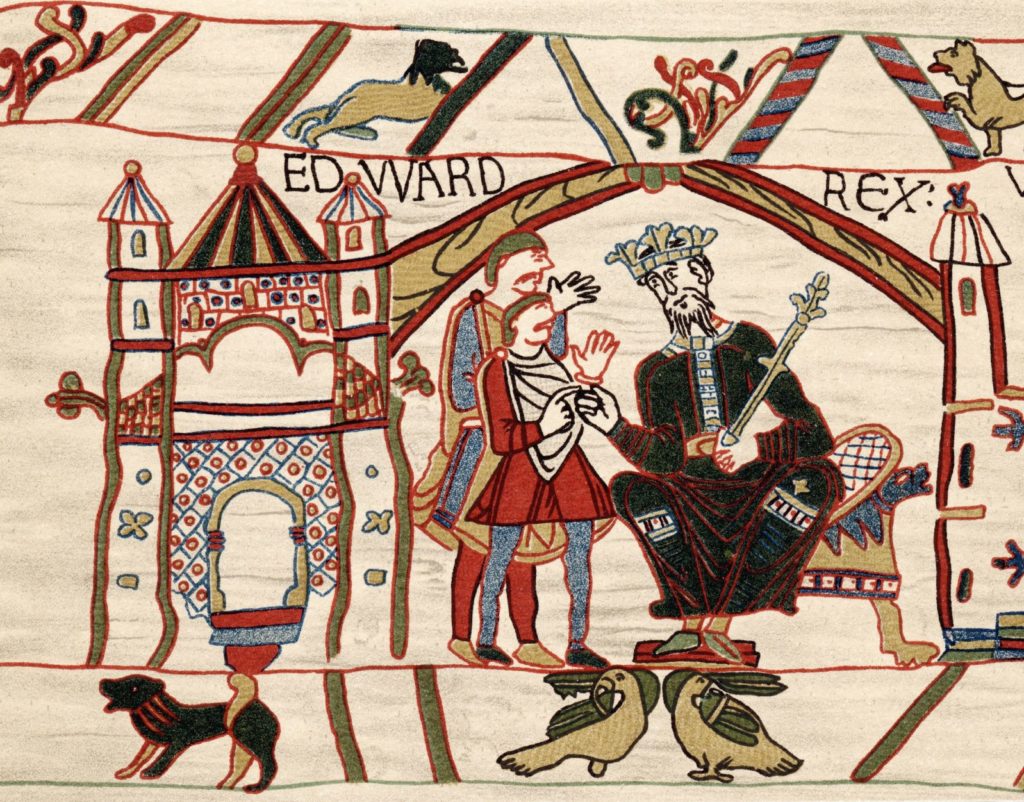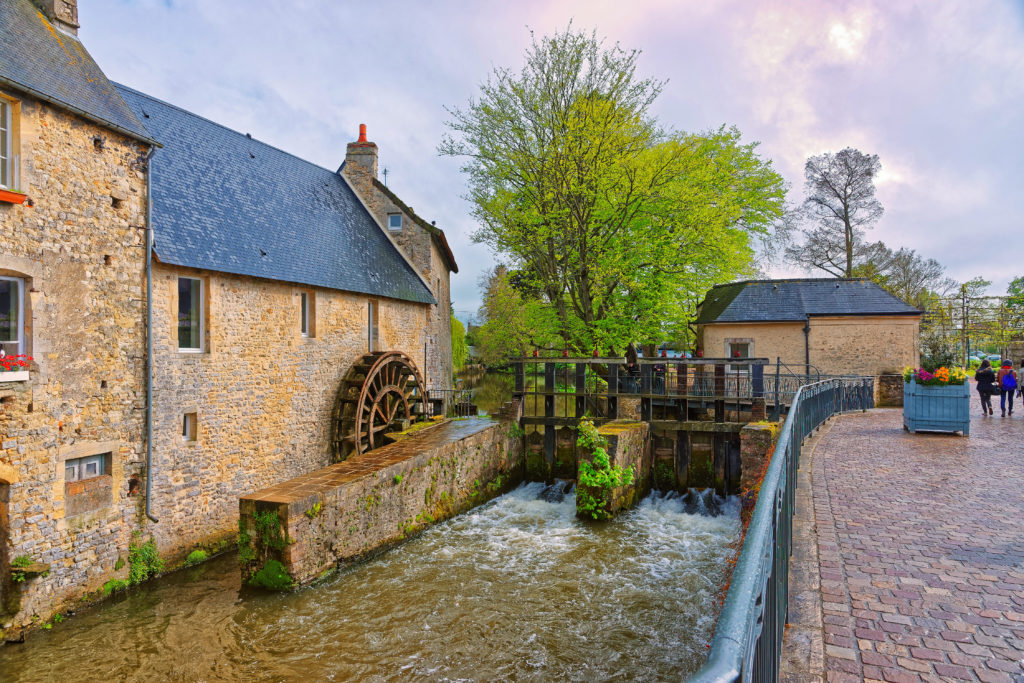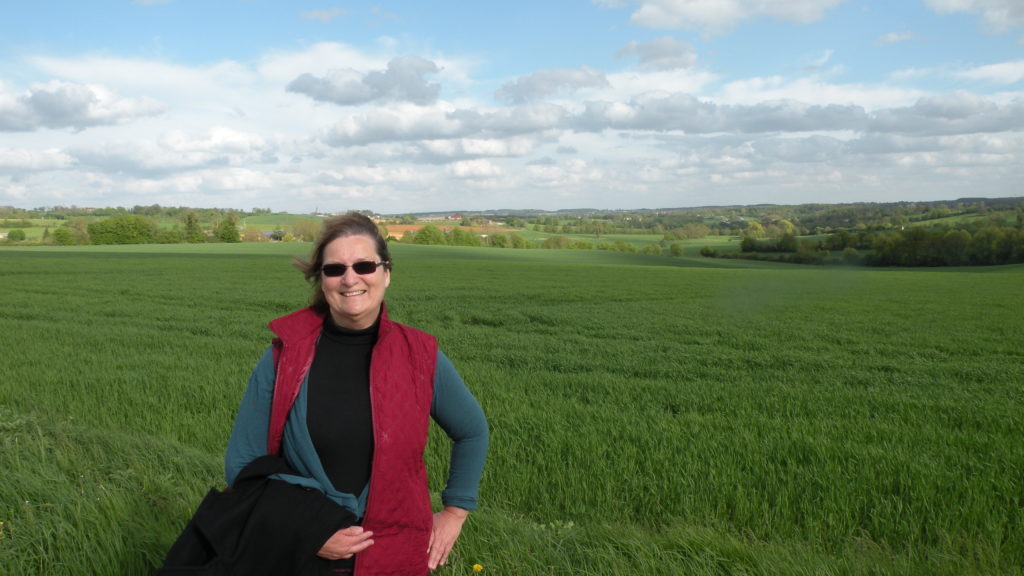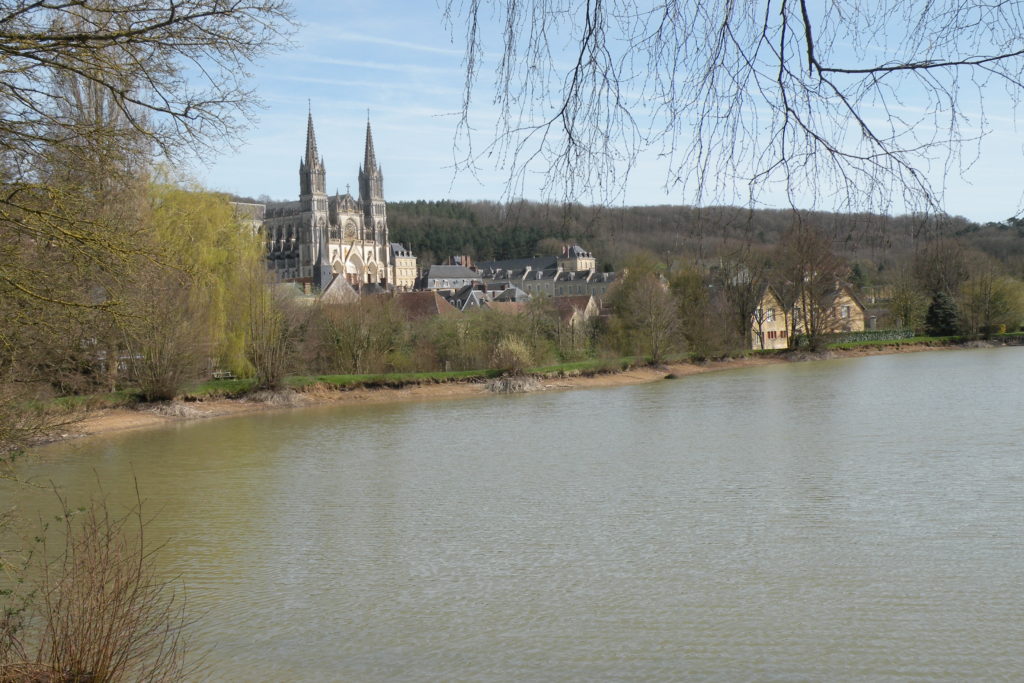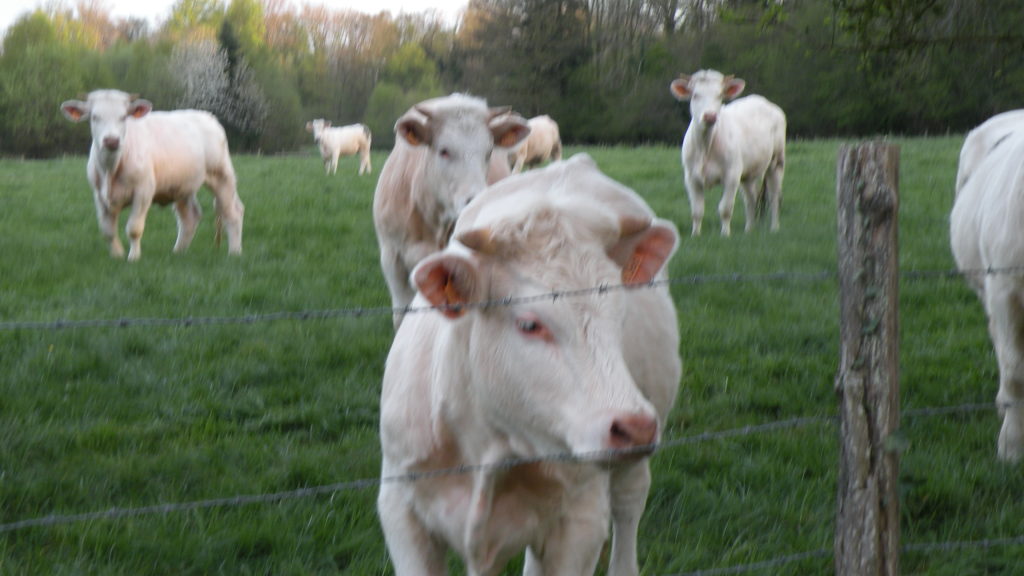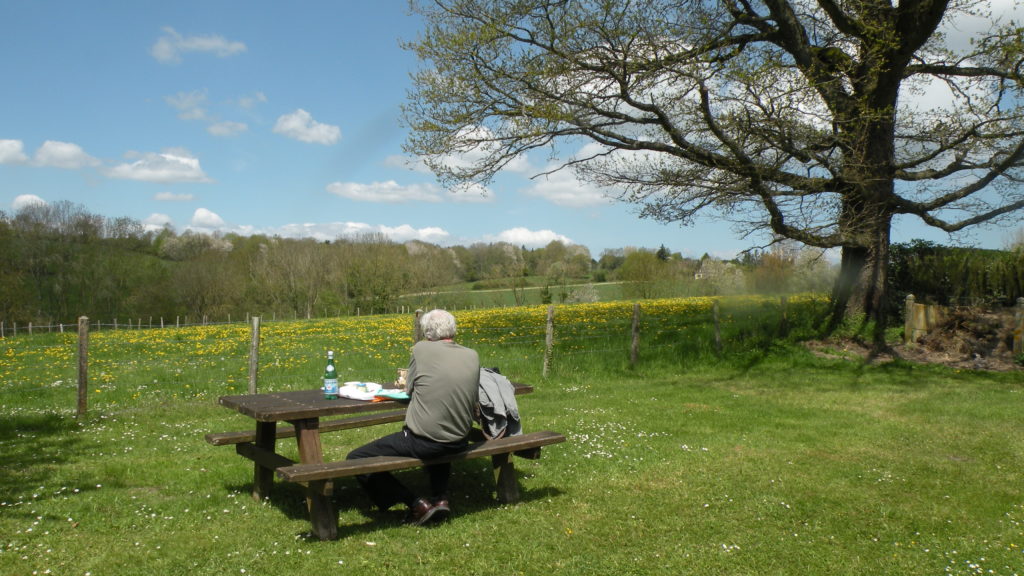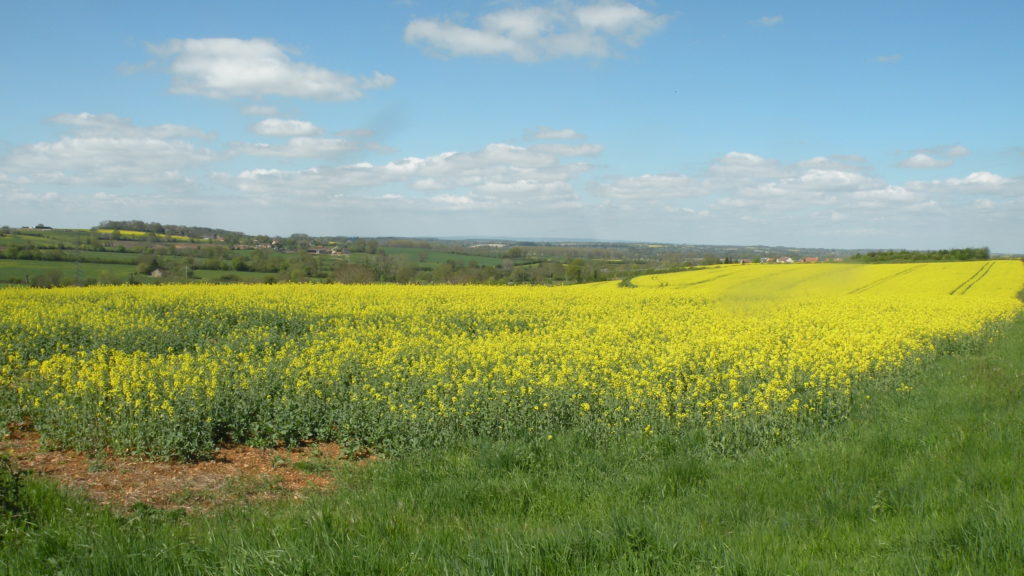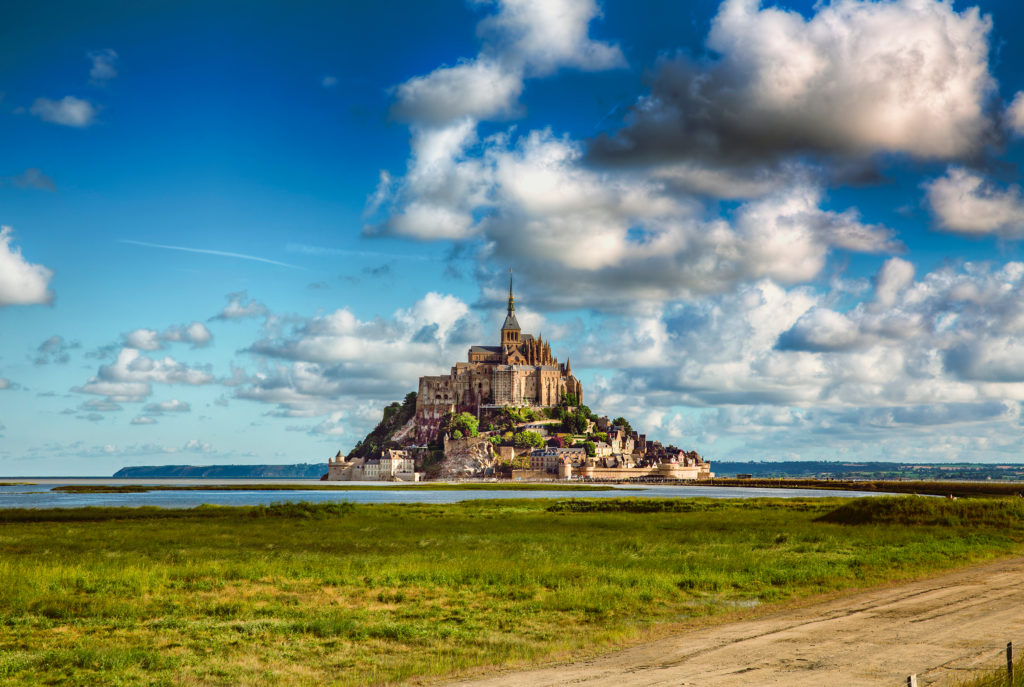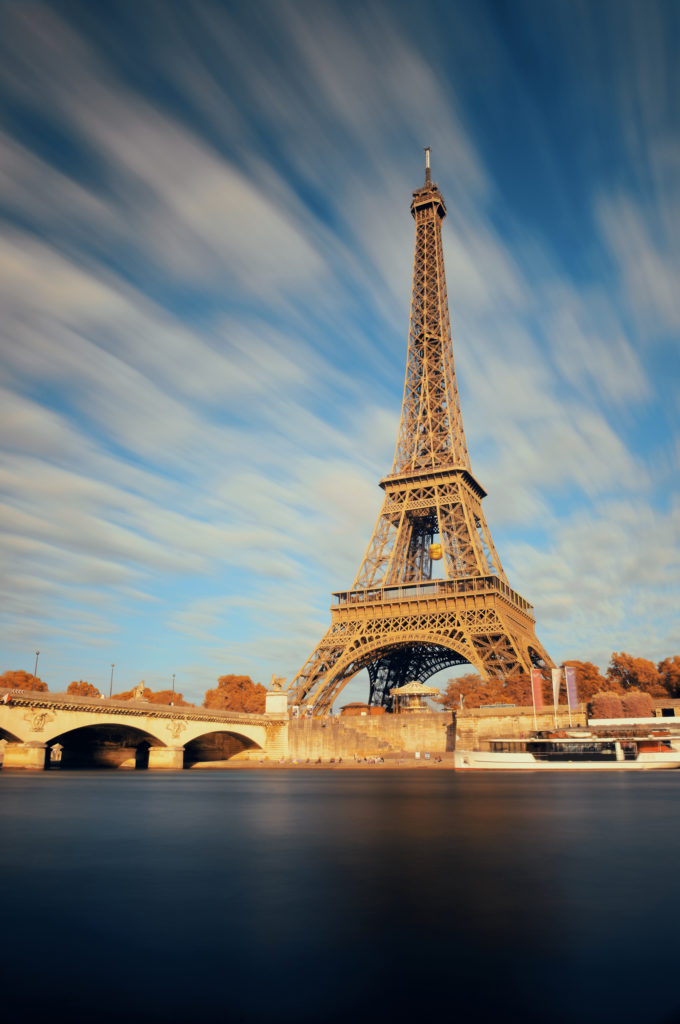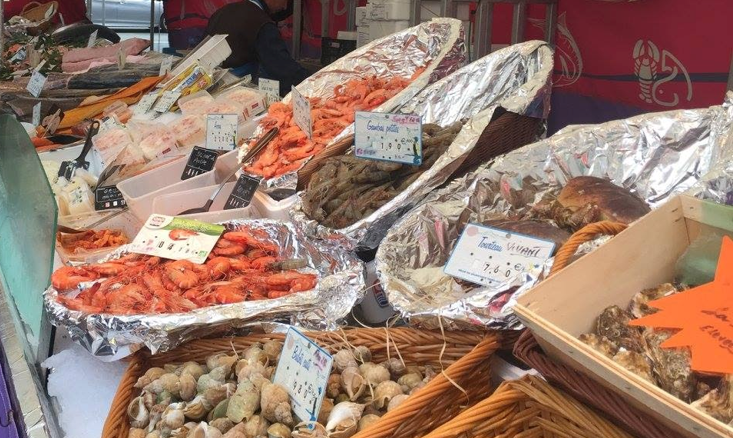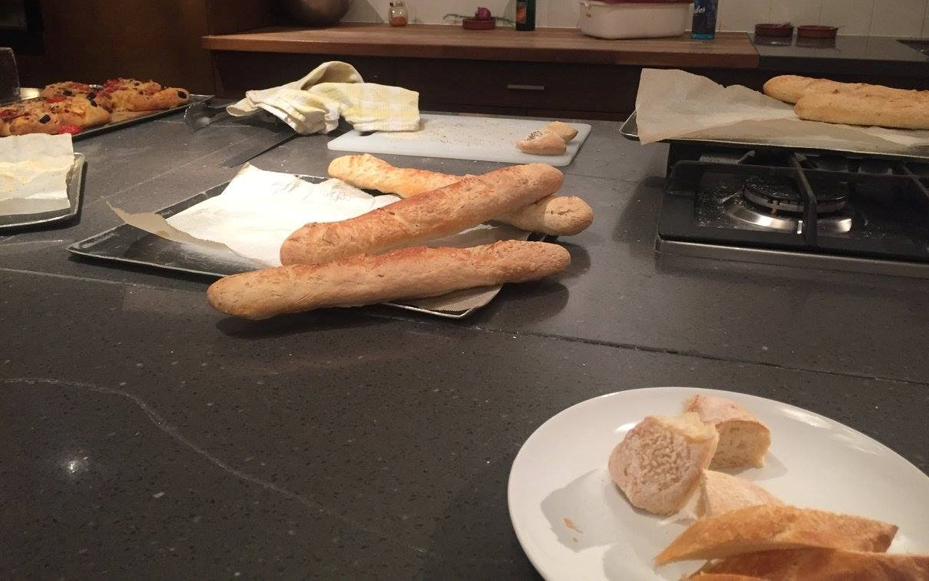Discover Lyon–Friendly, Vibrant & Very French
Discover the hidden gems of Lyon, France’s third-largest city and the center of gastronomy in France.
In 2019, guest poster Liz Reding moved with her husband Michael to France and settled in the charming city of Lyon. Liz shares tips for exploring and enjoying her adopted city.

By Liz Reding
When you travel, do you enjoy seeing and doing things that are a little off the beaten path? I know I do! Mind you, I think going to a grocery store in a foreign country is fun.
In this post, I’ll introduce you to my new hometown–the beautiful and vibrant city of Lyon.

Map of Lyon
The map below shows the location of the sights covered in this post. Because Lyon is relatively small, you can walk everywhere. And when you tire of walking, the public transportation system will get you where you want to go in a flash. It’s cheap, easy to use, clean, modern, and fast!
Lyon Overview
In Lyon, you won’t experience the manic hustle and tourist hordes of larger European cities, such as Paris, Berlin, and London. You will find friendly people, a truly French environment, and a lively cultural scene.
You’ll also find many opportunities for artsy travel in Lyon–from opera performances and fine arts museums to boulangeries and foodie experiences.
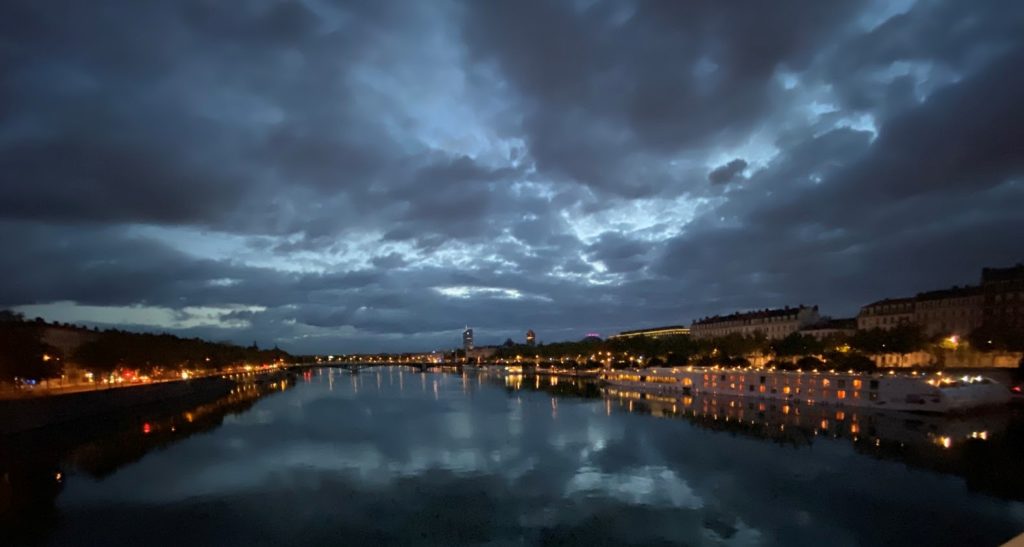
With a population of 1.7 million, Lyon is a manageable city about the same size as Copenhagen, Munich, and Vienna. It’s one third the size of Barcelona and one quarter that of Madrid.
A UNESCO World Heritage City, Lyon has a rich and varied history and cultural heritage. It was the capital of the Gauls in Roman times, an integral part of the 17th-century silk trade, a pivotal center of French Resistance during World War II, and is now a leader in the development and production of pharmaceuticals.
I’ve divided my guide to discovering Lyon into three sections: Touring Lyon, Visiting Museums and Churches, and Exploring Lyon’s Food Culture.
Touring Lyon
Lyon City Card
Like most European cities, Lyon offers a tourist card that gives you access to most of its museums and all of its transit system. To purchase your Lyon City Card, visit the Lyon Visitor Center at one of its many locations (including Place Bellecour) or purchase it online at Tiqets.com. Durations from one to four days are available.
The Lyon City Card offers free access to the public transportation system and free/discounted admission to 23 museums. You can enter an included attraction once per purchased card.
When using your Lyon City Card, be mindful of what days you’ll be using it. Many museums are closed on Monday. It would be a shame to lose one whole museum use day if your card includes a Monday.
For more information and a complete list of attractions, check the Lyon City Card website.
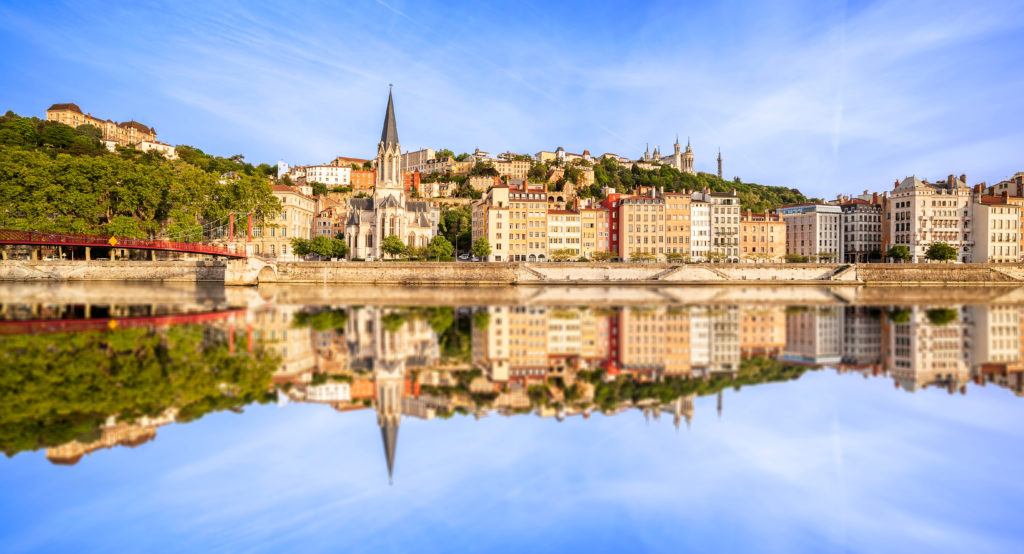
Lyon Sightseeing Cruise
The Lyon Sightseeing Cruise along the the Saône (rhymes with cone) River is a perfect afternoon/evening activity when you’ve walked your feet off and need some rest and relaxation. Enjoy watching the city of Lyon drift by while listening to the interesting narrative provided by the guide.
Every time I take one of these cruises, I learn something new. If you’re lucky and the weather is fine, you’ll be able to sit on the open top deck and take in some rays along with the sights.
The river cruise is free with the Lyon City Card or €13 per person without the card.
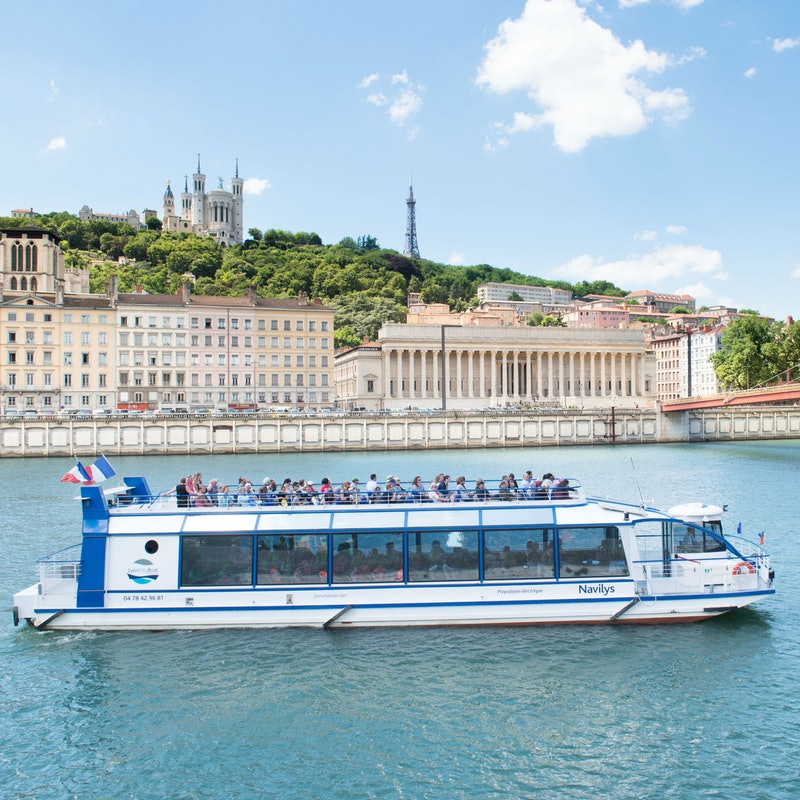
For more information and schedules, check out Sightseeing Cruises with Les Bateaux Lyonnais (#1 on the map above).
City Tram Tour
This motorized tour takes you to the Croix-Rousse area (#2) and shows you many fascinating features of this city-within-a-city in Lyon.
The open-sided tram trundles through the village-like streets of an area that was once the silk workers’ district and is now famous for its boho atmosphere, markets, and wall murals (more on the murals later!).
Unlike the rest of the city, Croix-Rousse is located on top of a hill. You can access Croix-Rousse by foot, Metro, or bus. However, taking the funicular is the most fun. If you haven’t ridden one, you really must!
The tram tour is free with the Lyon City Card or €9 per person without the card. Find out more and book your tour at the Lyon City Tram website.
Vieux Lyon (Old Lyon)
The old town of Lyon (#3) is quaint, charming, and full of mysteries and calories. Vieux Lyon is the one of the most extensive Renaissance neighborhoods in Europe, with three distinct sections: Saint Jean, Saint Paul and Saint Georges.
Stroll along charming, narrow cobblestone streets and through the traboules–covered passageways–that are a fascinating historical feature of this area. Have a look at the Gothic-style Saint Jean Cathedral.
Better yet, take a guided walking tour of Vieux Lyon. This two-hour tour in English includes lively narration about the history and culture of Lyon, the history of silk production, the French Resistance during World War II, and Lyon food culture.
Check the Free Tour Lyon website for tour times and more details. The tour starts at 10 am at Place Saint-Jean and runs on Monday, Wednesday, Thursday, and Saturday. Book ahead or just show up.
Visiting Churches and Museums
La Basilique Notre Dame de Fourvière
How can you not be awed by this building and the view of Lyon from the overlook? La Basilique Notre Dame de Fourvière (#4) is one of Lyon’s principal landmarks, visible from almost everywhere in the city.
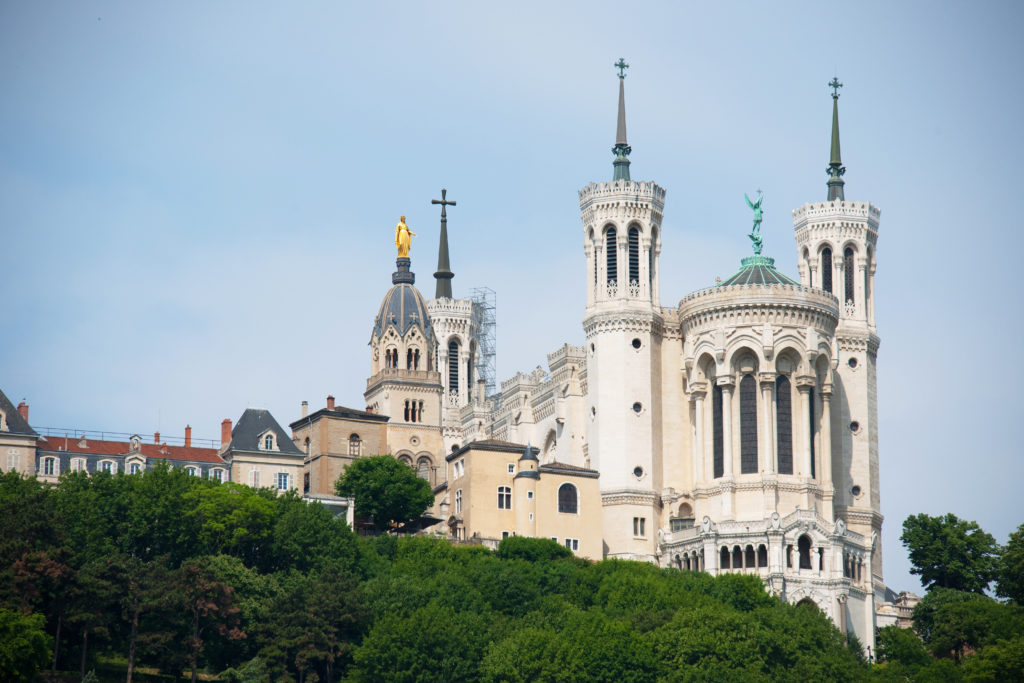
Built between 1872 and 1884 and dedicated to the Virgin Mary, the Basilique Notre Dame de Fourvière is a relatively modern structure. The annual Fête de Lumières (Festival of Lights), held in early December, is Lyon’s way of thanking the Virgin for saving the city from the bubonic plague that swept through Europe in 1643.
Highlights of your visit to Fourvière include:
- Discovery Visit: Every day from April to November, take a free, 30-minute guided tour of the Basilica; it’s offered in several languages. Check the website for tour times.
- Theme Visit: Every Saturday at 2:30 pm, choose one of ten free theme visits to learn about various aspects of the Basilica including its Byzantine and Art Nouveau-inspired mosaics, stained glass, and the altarpieces.
- Rooftop Visit: Go behind the scenes of the basilica and take a walk on the roof. The guided Rooftop Tour is free with the Lyon City Card or €10 without the card. Pre-booking is recommended. Check the website for dates and times.
- Garden Walk: The beautifully landscaped Rosary Gardens include 1,400 meters of pathways.
- View over Lyon: Enjoy the stunning view over Lyon.
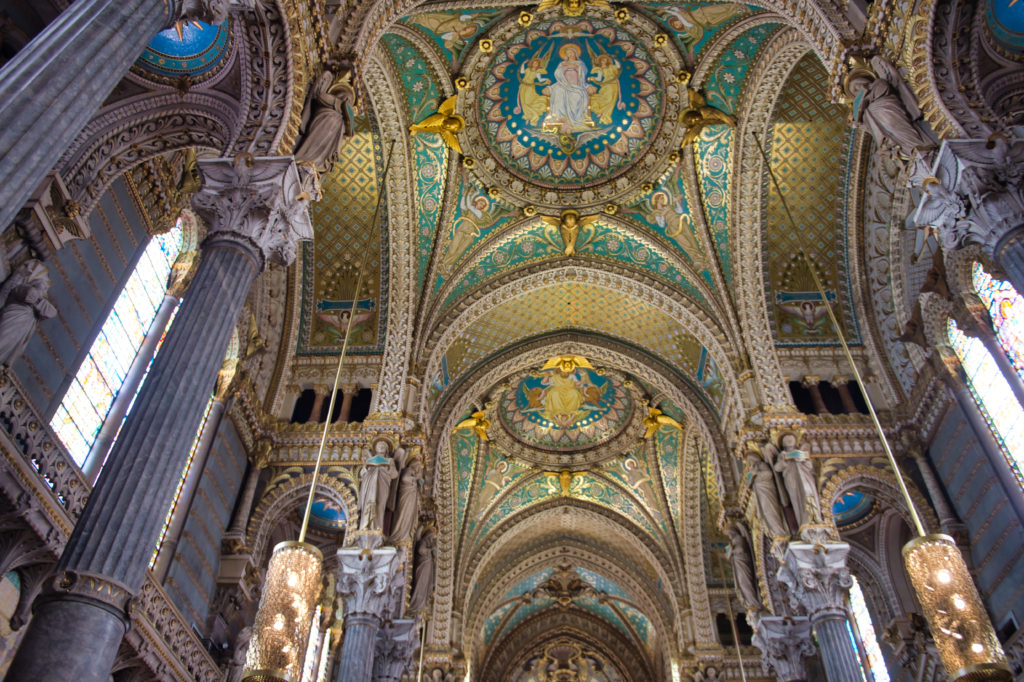
To visit the Basilica, take the Fourvière funicular to Vieux Lyon Saint Jean station. Find information about opening times on the website.
Museum of Confluences
This giant of a building is worth seeing, even if you don’t go in: it’s that dynamic and eye-catching.
The Musée des Confluences (#5) includes a world-class collection of over two million objects from the fields of paleontology, mineralogy, entomology, ethnology, Egyptology, and technology and is divided into three areas: natural sciences, human sciences, and science and technology.
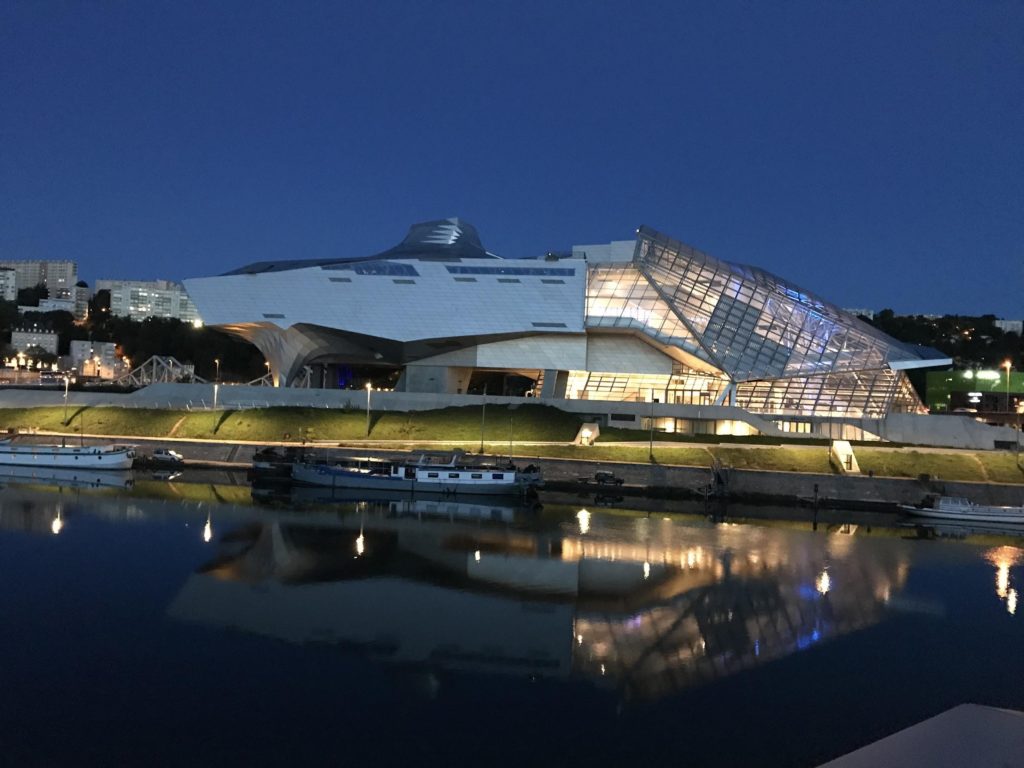
The museum is named both for its location at the confluence of the Rhône and Saône Rivers and for its explorations of the confluences between cultures, animals, and technology.
This monument to modern architecture is a must-see in Lyon. Its detailed and fascinating exhibits are creatively curated. Set aside several hours to explore the many galleries.
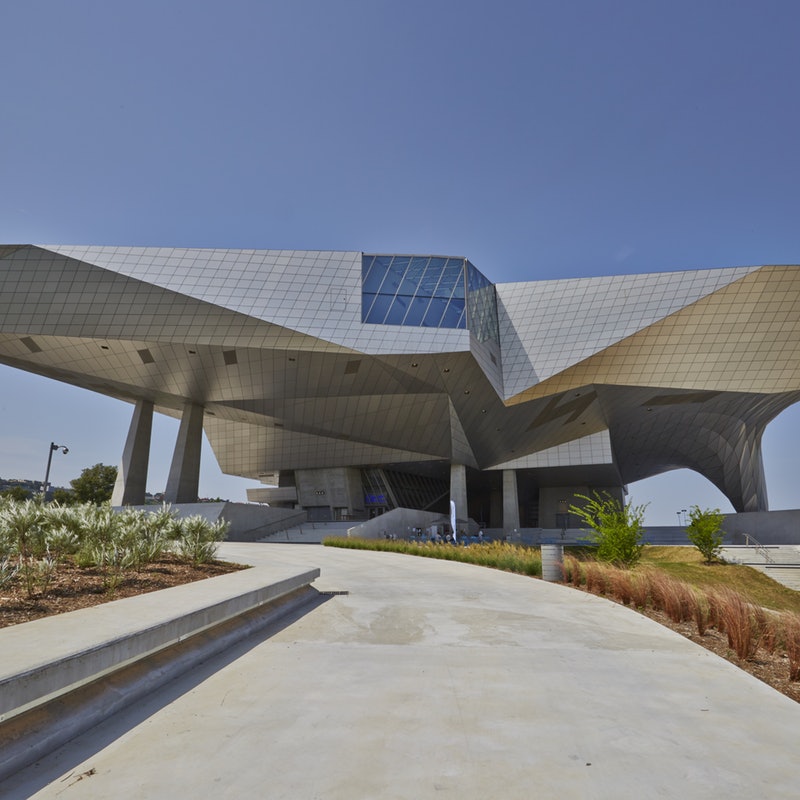
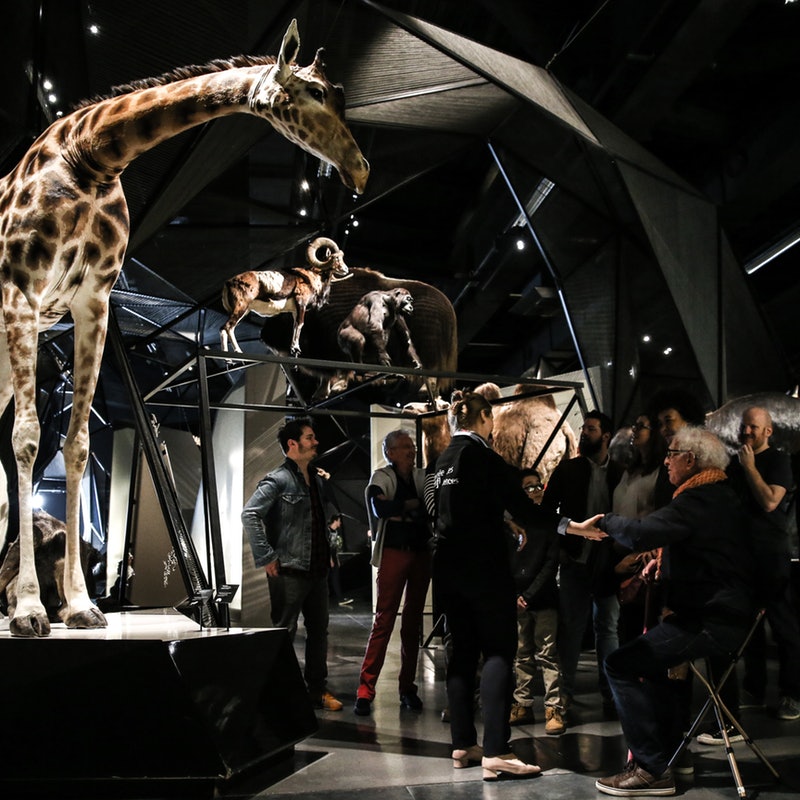
The museum is free with the Lyon City Card or €9 per person without the card. Another option is to buy Skip-the-Line tickets in advance.
If you’d prefer to simply enjoy a magnificent view of the rivers and Lyon, you can access the observation deck free of charge.
My husband and I sometimes go into the building just to marvel at the structure. The museum looks completely different depending on your vantage point.
Take Tram T1 to Musée des Confluences. The museum is open Tuesday, Wednesday and Friday from 11 am to 7 pm, Thursday from 11 am to 10 pm, and Saturday, Sunday and public holidays from 10 am to 7 pm. For more information about special exhibitions, visit the museum’s website.
Center for the History of the Resistance and Deportation
This sobering, reflective, and reverent collection is one example of how Lyon commemorates its role in the deportation of enemies of the state during World War II.
The Centre d’histoire de la résistance et de la déportation (#6) is my favorite museum in Lyon. I love its artifacts and how they are presented.
Nearly every time I visit this museum, I encounter a group of students learning about this important time in their city’s history. I’m always struck by the attention they pay and the respect they show while listening to the guide explain the exhibits.
Admission is free with the Lyon City Card or €6 per person without the card.
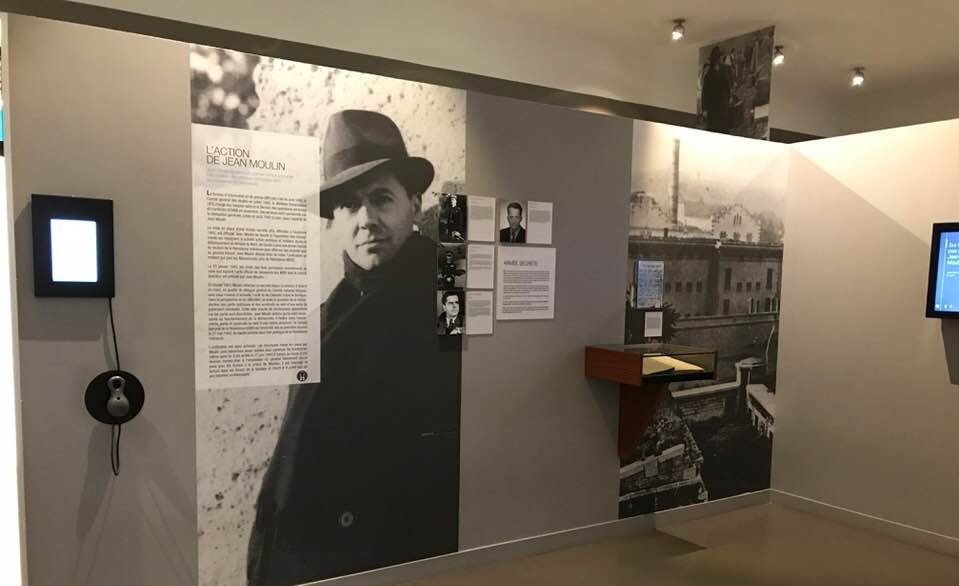
The Centre is open Wednesday to Sunday from 10 am to 6 pm. Take Tram T2 to Centre Berthelot stop or Metro Line B to Station Jean Macé. Find more information about special exhibitions on the museum’s website.
Musée Gadagne: Lyon History Museum
Another favorite, the Musée Gadagne (#7) traces the history of the city from the Capital of the Gauls to the present. If you love urban planning and want to learn how Lyon got to where it is today, this museum is for you!
I was surprised to learn that Lyon had the same mayor (Edouard Herriot) for over 50 years–from 1905 to 1940 and from 1945 to 1957.
As you leave this exhibit, you’ll see a beautiful re-creation of a residential parlor during World War II and a film on the history of Lyon during the early 1900s.
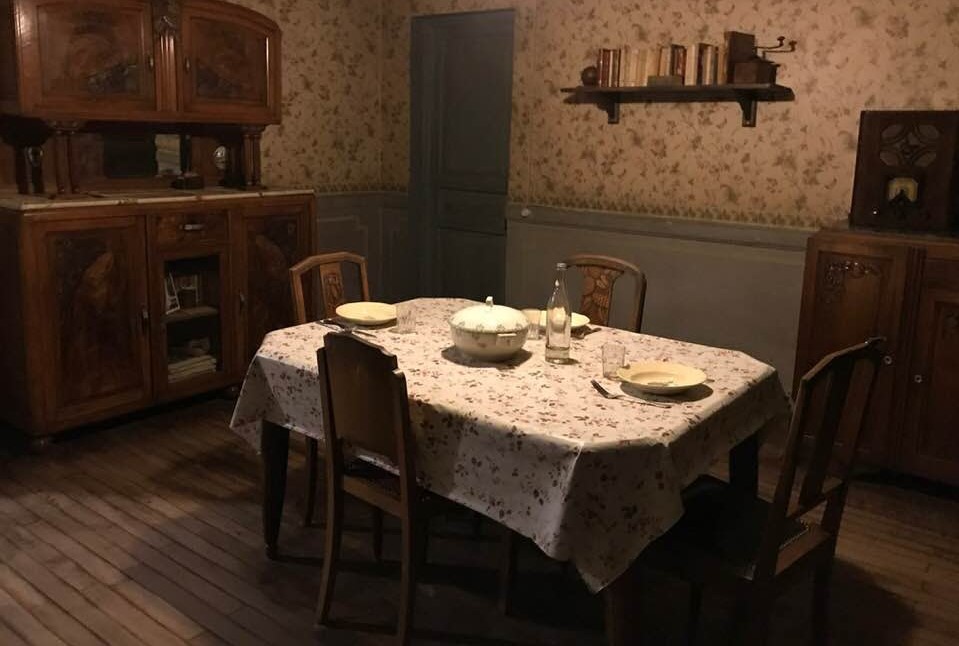
The Lyon History Museum is located at 1 place du petit Collège and is open Wednesday to Sunday from 10:30 am to 6:30 pm. Admission is free with the Lyon City Card or €8 per person without the card. For more information about special exhibitions, check the museum’s website.
Lumière Museum
The Institut Lumière (#8) museum celebrates the achievements of the Lumière brothers (Auguste and Louis) and is located in the house in which their family lived.
Louis Lumière invented the Cinématograph in 1895 as well as various cameras and color and relief photographs. The first film was made in the garden of the house which, at the time, was the largest factory in Europe for the production of photographic plates.
The Institut Lumière produces the annual Festival Lumière every October. If you’re interested in film, you’ll be dazzled by the silent films in this exhibit. The technology on display has been lovingly preserved.
This Lumière Museum is free with the Lyon City Card or €7 per person without the card.
The museum is open Tuesday to Sunday from 10 am to 6:30 pm. For information about location and special exhibitions, check the website.
Tony Garnier Urban Museum
The Tony Garnier Urban Museum (#9) outdoor museum is in the 8th arrondissement (district) of Lyon known as États-Unis (United States). The buildings within the district were designed by the architect Tony Garnier, who worked with long-time friend and Lyon mayor, Edouard Herriot.
Garnier was responsible for much of the infrastructure in the City of Lyon. He designed the social housing development in the États-Unis. Somewhat of a rebel, Garnier wanted to explore new ways of thinking about how to solve modern housing problems.
Huge murals on the ends of housing blocks have turned the area into an open-air art gallery. Many of these paintings incorporate optical illusions that draw you into the action – you can hardly determine what’s real and what’s not. Check in at the museum office to get a map and an audio guide to take with you as you tour the murals.
Here are some of the murals you’ll see in the neighborhood. All photos by Liz Reding.
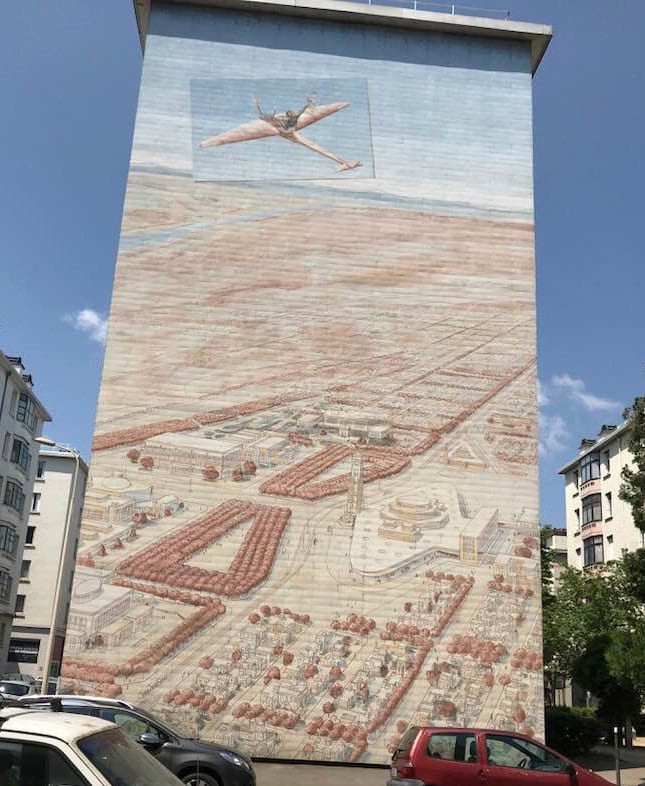
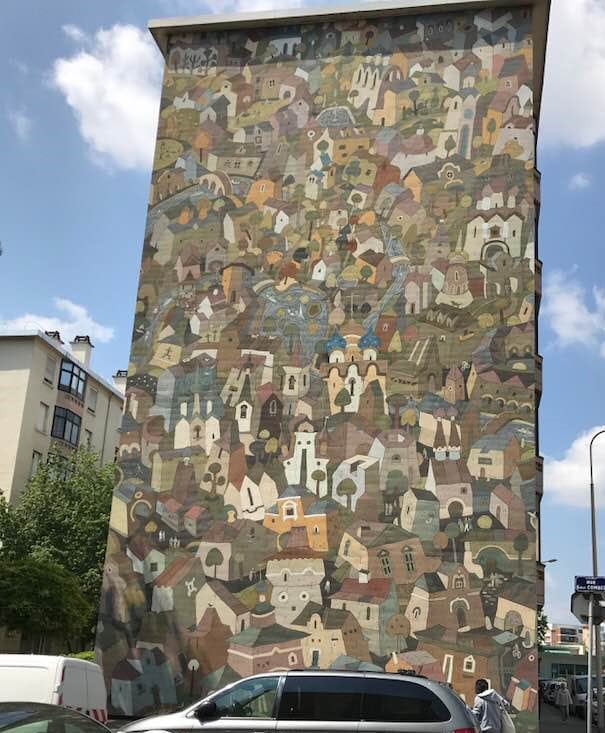
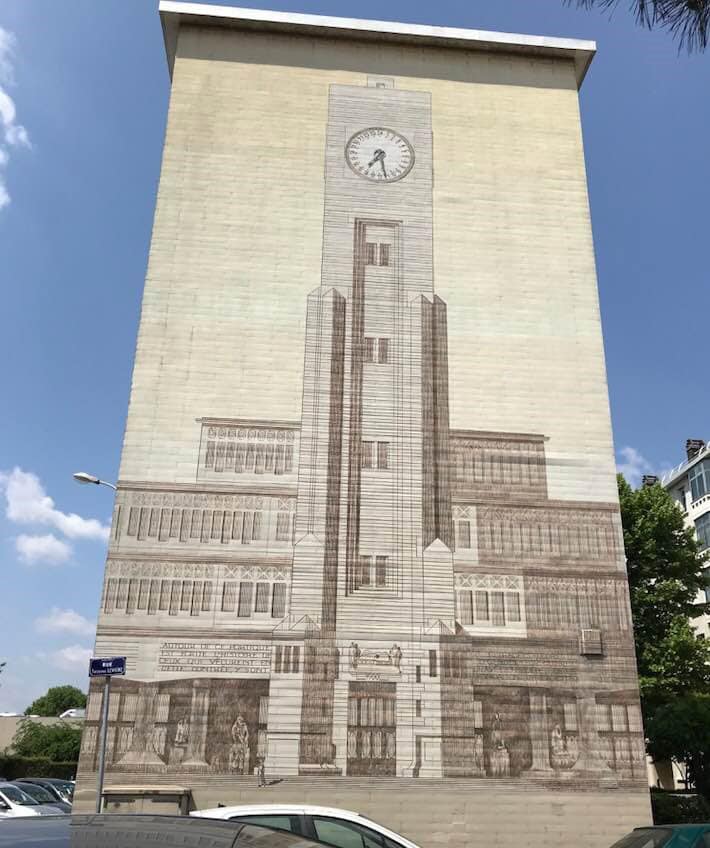
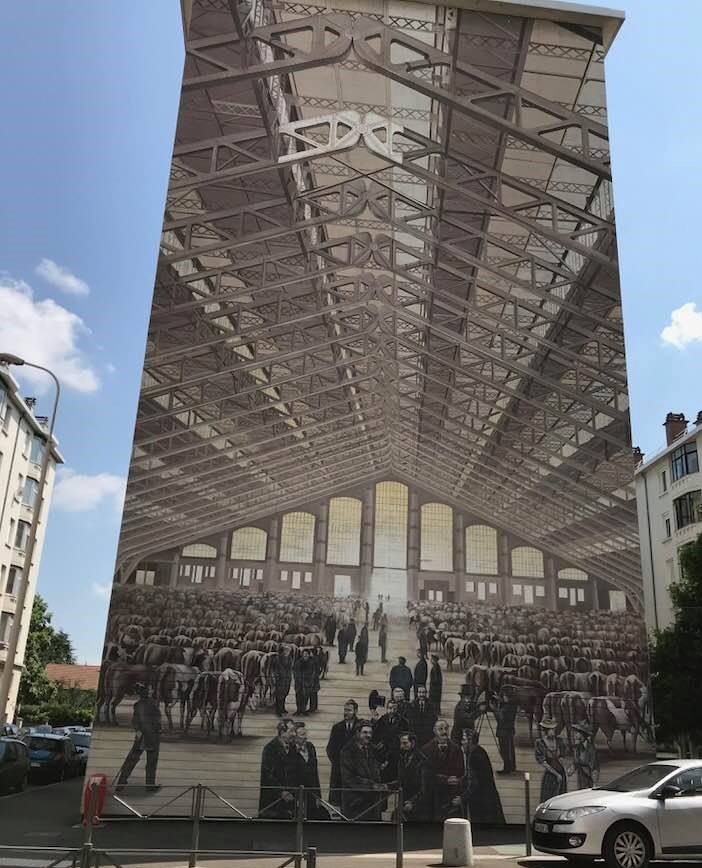
While most of this exhibit is outdoors, a highlight is the excellent indoor re-creation of a model apartment. You’ll find many tributes to Tony Garnier throughout Lyon.
The Tony Garnier Urban Museum is free with the Lyon City Card or €6 per person without the card.
The museum is open Tuesday to Sunday from 2 pm to 6 pm and closes for three weeks in August. Take Tram T4 to Musée Tony Garnier on 4, rue des Serpollières.
Exploring Lyon’s Food Culture
Les Halles de Lyon – Paul Bocuse
Les Halles de Lyon – Paul Bocuse (#10) is foodie heaven! And, even better, visiting Les Halle de Lyon is free.
Fortunately, as we all know, food consumed on vacation doesn’t have any calories!
What kind of food will you find here? Buy bread, cheese, meat, fish, poultry, fresh produce, oils and vinegars, wine, and, of course, chocolates and pastries that will clog your arteries and make you happy.
You’ll also find a dizzying array of restaurants tucked in and around the shops. Exploring this amazing place and sampling what’s being served in the restaurants is part of the fun!
Les Halle de Lyon – Paul Bocuse is located at 102 Cours Lafayette and open daily from 7 am to 10:30 pm. Access via Tram T1, stop Mairie du 3.
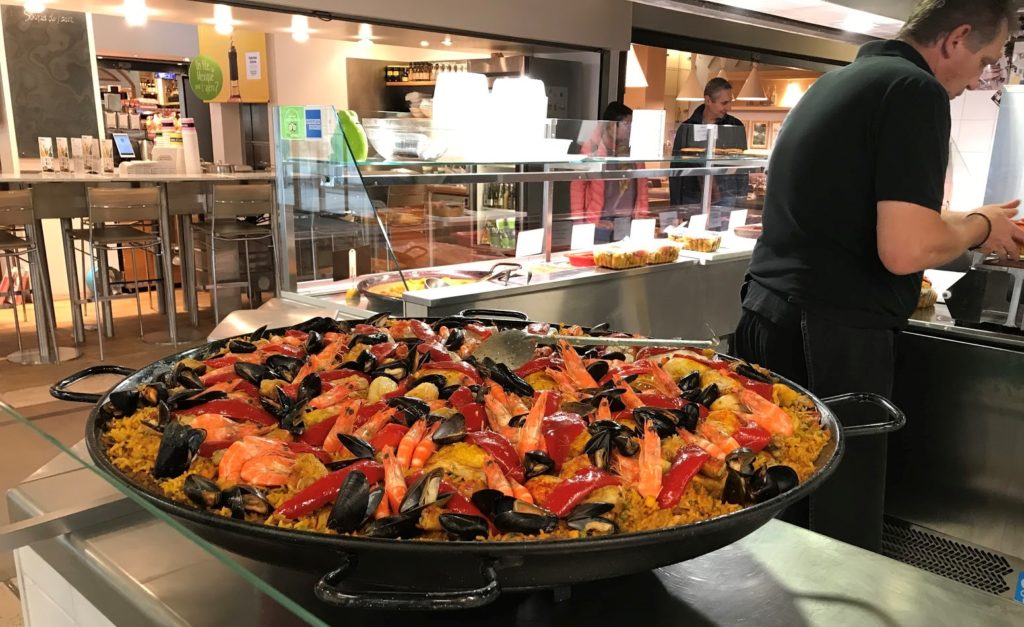
Croix-Rousse Marché
Open every day except Monday, the Marché alimentaire de la Croix-Rousse (#11) is like no other. It’s huge and carries regular and bio (organic) produce.
In addition to the Croix-Rousse Marche, you’ll find a market in every arrondissement in Lyon. Most markets start early in the morning and end around 1 pm.
One of the few markets that opens later in the day is located just above the Metro stop at Place Jean Jaures. This market is smaller than most but offers a wide selection of produce, cheese, and meat and is open Thursdays from 2 pm-7 pm.
What To Eat in Lyon
Hey, you’re in France! Eat lots of bread and pastry … and drink lots of wine! You’ll find boulangeries (bakeries) on nearly every street.
Do I have a favorite boulangerie? Well, some people say that the best boulangerie is the one that’s open and closest to you. I prefer the establishments with signs that say either boulanger or boulangerie, because the products are usually hand-made rather than frozen or pre-made and baked on-site.
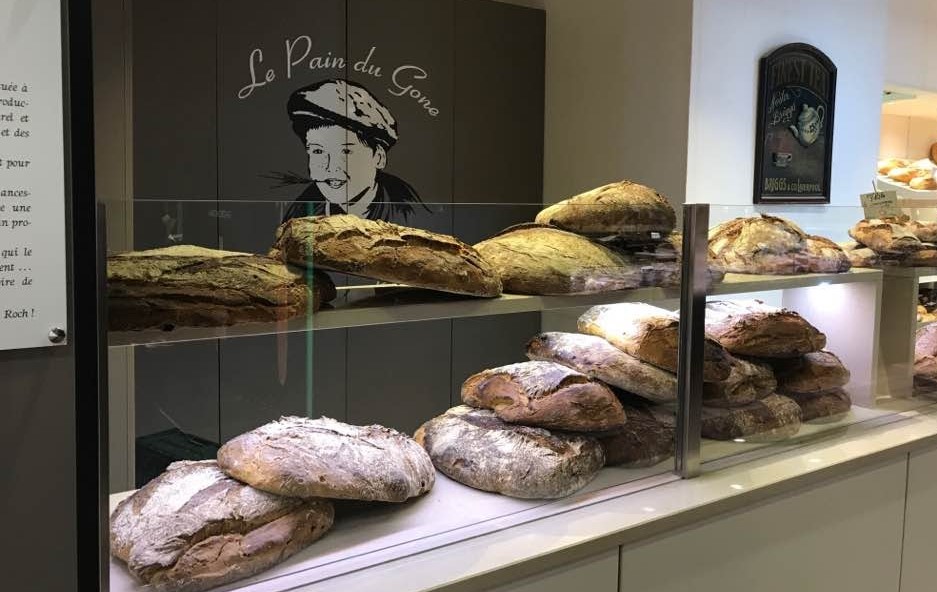
You’ll have to do your own research to decide which boulangerie is the best.
Purchase wine in any grocery store, even on Sundays. You’ll be astounded by the number of wine choices and how much fun they can be to sample! Of course, you can always find pricey wines, but don’t overlook the cheap stuff.
Our price point is €4 to €8 per bottle, and we’re never disappointed. Also, practice makes perfect!
Although full of attractions and interesting things to do, Lyon remains relatively undiscovered by tourists. You won’t find the museums crowded, and you shouldn’t have trouble finding great restaurants in which to enjoy Lyon’s famous cuisine.
Lyon is considered the capital of gastronomy in France.
No wonder my husband and I moved here.
Check out Liz Reding’s post about cooking classes in Paris and Lyon.
For more information about France, check out the France page and these posts:
